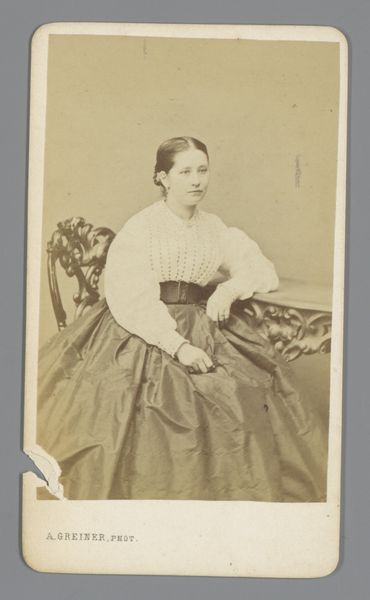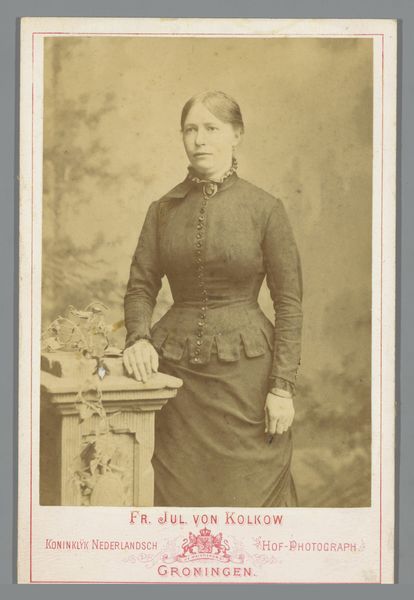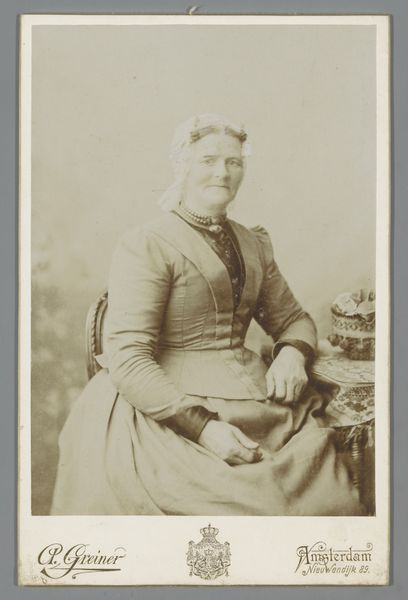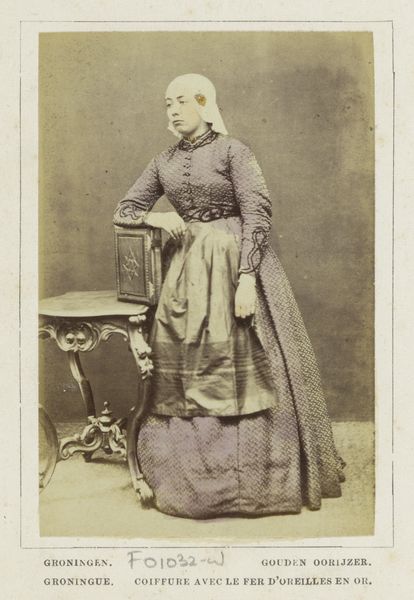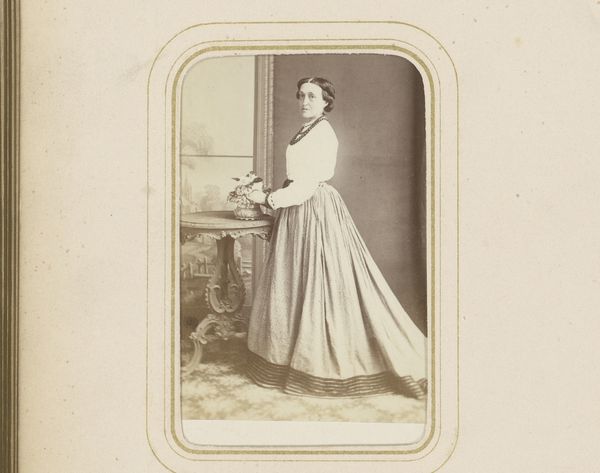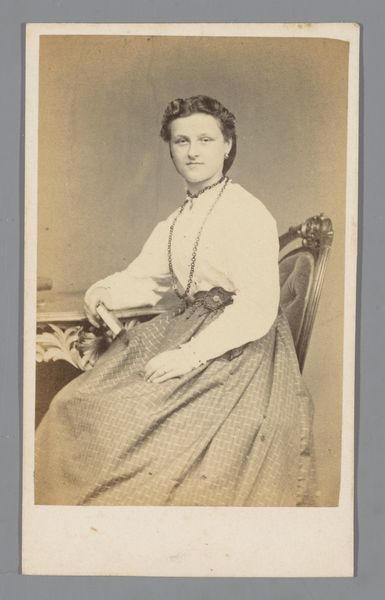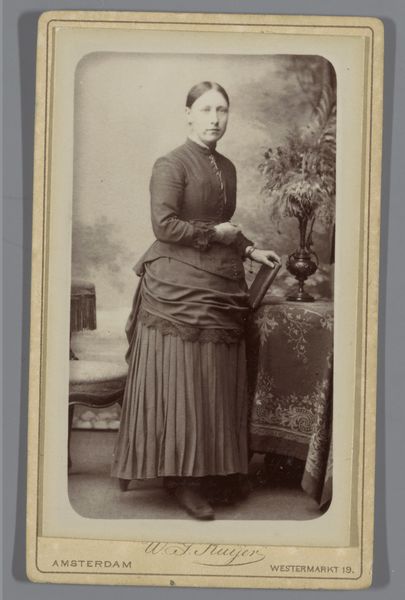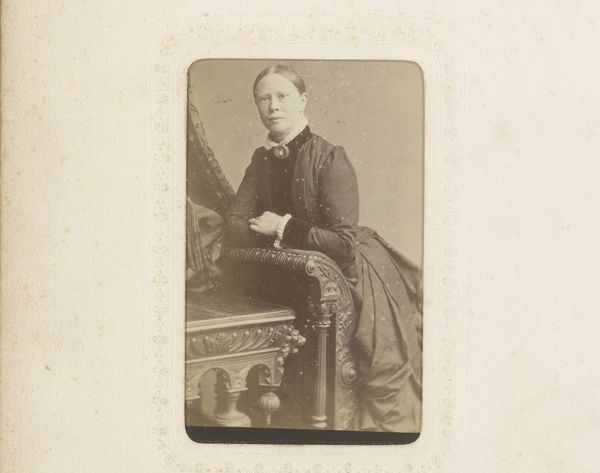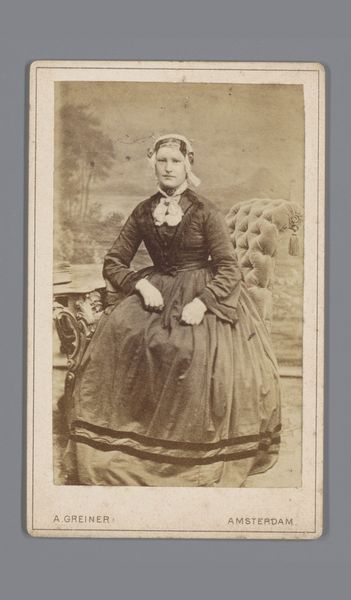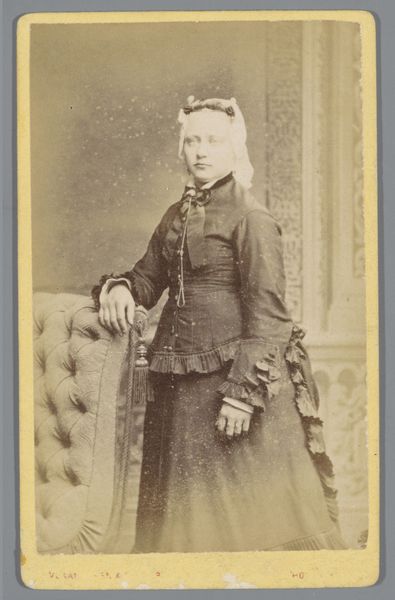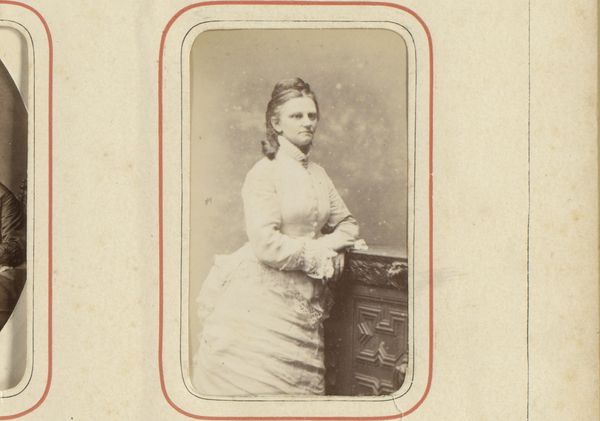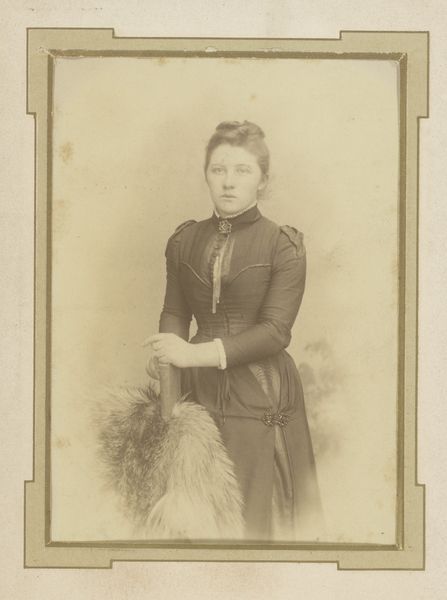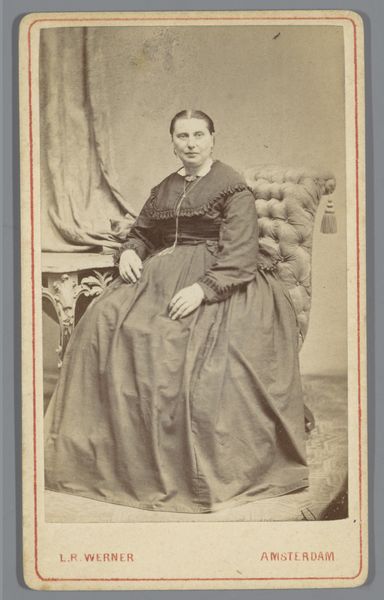
Portret van een Amsterdams dienstmeisje met een emmer en een zeepbak c. 1870 - 1890
0:00
0:00
andriesjager
Rijksmuseum
photography
#
portrait
#
photography
#
historical photography
#
19th century
#
genre-painting
#
naturalism
Dimensions: height 167 mm, width 103 mm
Copyright: Rijks Museum: Open Domain
Editor: So this is "Portret van een Amsterdams dienstmeisje met een emmer en een zeepbak," roughly translated as "Portrait of an Amsterdam maid with a bucket and soap dish," a photograph taken by Andries Jager sometime between 1870 and 1890. I'm immediately drawn to how the image makes visible the tools of labor – the bucket and soap dish prominently displayed. What can you tell us about the way materiality shapes our understanding of this piece? Curator: Well, let's consider the material reality being presented here. We see not just the woman, but the very instruments of her work. The bucket, the soap – these are tangible objects representing labor, consumption, and the broader economic structure. Jager is forcing us to confront the raw materials that constitute daily life for working-class women in Amsterdam. Does this challenge typical conventions around portraiture and what should be deemed worthy of artistic representation? Editor: Definitely. It's not just about the woman's likeness; it’s about visually representing the material conditions of her work. The inclusion of the bucket and soap immediately grounds the portrait in her reality. Do you think the photograph flattens any high/low art distinctions? Curator: Precisely! By placing such emphasis on these objects, typically overlooked or considered unworthy of artistic depiction, Jager blurs the lines between high art and everyday existence. How does understanding the process by which this image was made — a photographic print developed using specific chemical processes and mass-produced for sale — influence our perception of the subject's labor and its relation to larger systems of production and consumption? Editor: Thinking about it, the photograph becomes both a document of labor and a commodity itself. I appreciate how this lens draws our attention to the broader economic forces at play. Curator: Indeed, recognizing photography as both artistic and material practice reshapes the ways we think about artistic production.
Comments
No comments
Be the first to comment and join the conversation on the ultimate creative platform.
